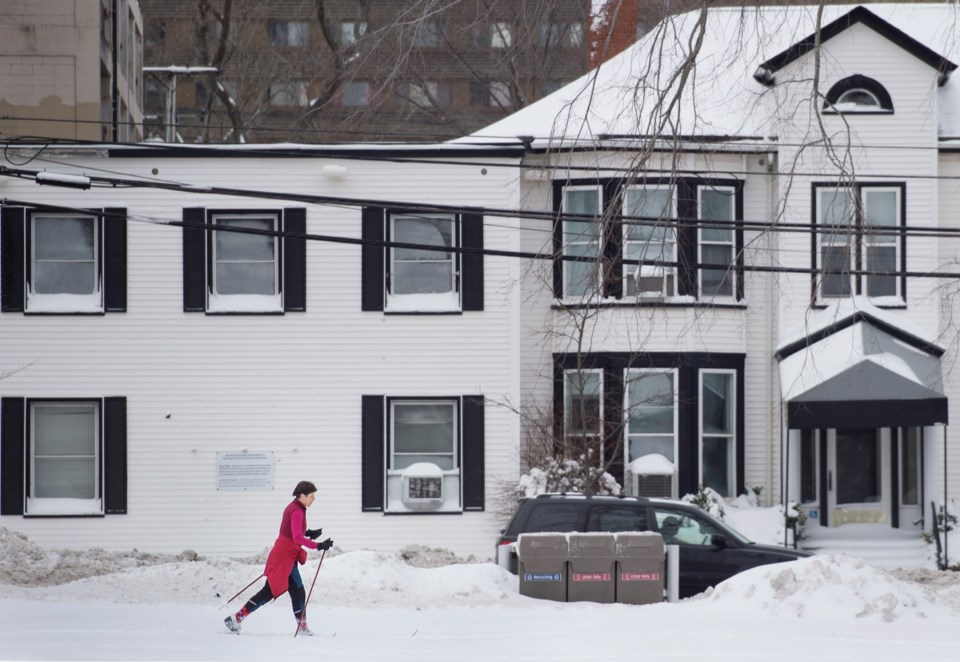Amalgamation would not necessarily be cheaper nor would it provide better representation than the existing 13 municipalities working within the Capital Regional District, says a report to be released today by the Fraser Institute.
“When you look around at the amalgamation studies that have been done elsewhere, they all cost more — and they cost a lot more,” said Robert Bish, one of the study’s authors. “And that’s because big bureaucracies aren’t very efficient with services that are hard to measure.”
Costs for amalgamating and post-amalgamation operations are continuously underestimated, says the report, titled Governing Greater Victoria, co-authored by Bish and Josef Filipowicz. It cites the example of Halifax, where amalgamation cost an estimated $40 million — more than four times the predicted $9.8 million.
Bish, professor emeritus at the University of Victoria’s School of Public Administration, said many people don’t understand how the regional district system works.
But structurally, he said, the system of local governments agreeing to share certain services for mutual benefit is sound and provides economies of scale.
Given the diverse nature of the 13 communities in the capital region, it would be extremely difficult to impose a uniform system of taxation after amalgamation, Bish said.
Once more far-flung areas of a region — Central Saanich or Metchosin, for example — are required to pay the same tax rate as everyone else to a central government, they begin to expect the same services, he said. “And those areas are really expensive to provide urban-style services.”
Many people assume that if Greater Victoria had fewer elected officials, local government expenditures would also be lower, but the report calls that a “serious misconception.”
Even though there are 91 local elected officials within the capital region, the report notes, they are for the most part paid part-time salaries and represent a negligible percentage — about half of one per cent — of local government spending.
In considering amalgamation, residents of Greater Victoria have to ask themselves whether they “want to retain a highly representative system where councillors are part time, participate on many committees, boards and commissions, and can run for office at low cost, or move toward full-time councillors who delegate many decisions to staff and require significant donations to finance their election,” says the report, published by the right-of-centre think-tank.
Decisions in an amalgamated Greater Victoria would be made by fewer councillors, and experience shows many of those decisions would be made by non-elected staff, the report says.
“In Greater Victoria, there are 897 staff paid above $75,000 or roughly 10 per elected official. In Vancouver, there are 2,428 (221 per elected official), in Surrey 1,038 (115), in Burnaby 738 (82) and in Richmond 704 (78),” the report says.
“Thus, not only are elected officials paid more, but they have to delegate decisions to staff that would be made by elected officials in Greater Victoria.”
The report adds that it would be impossible for a single council to handle all the agenda items that currently appear before Greater Victoria’s 13 councils.
The authors do say local politicians could pay closer attention to the CRD, which has expanded over the years to have the same number of employees as Victoria and Saanich, noting: “It is unlikely that municipal committee members pay as much attention to the costs and performance of CRD-produced services as they do to services produced by their municipality. This leaves more of the decision-making up to CRD staff with less involvement from the elected officials.”
The report also acknowledges that situations arise where there are perceived winners and losers, such as when Esquimalt refused zoning variances to allow a regional sewage treatment plant to be built at McLoughlin Point. “Perhaps if the CRD had offered Esquimalt citizens some benefits to offset their costs earlier in the process, before opposition hardened, the outcome may have been different.”
While CRD directors are now appointed by their local councils, the report suggests consideration be given to directly electing the board chair.
“We think that an elected board member — the chair — would bring some political legitimacy to the CRD [and] become part of the campaign in a way that the local mayors that are a board chair don’t,” Bish said. “And we think that executive office has much more potential to be cost-conscious than the way it’s set up right now.”



